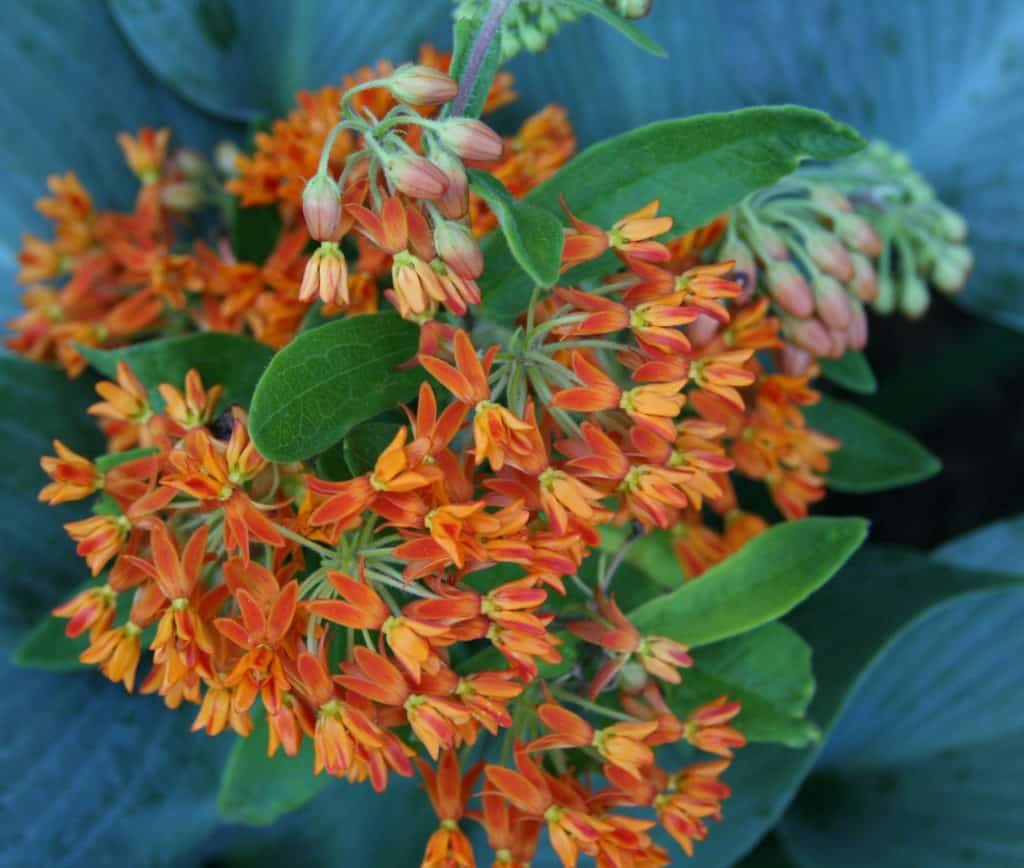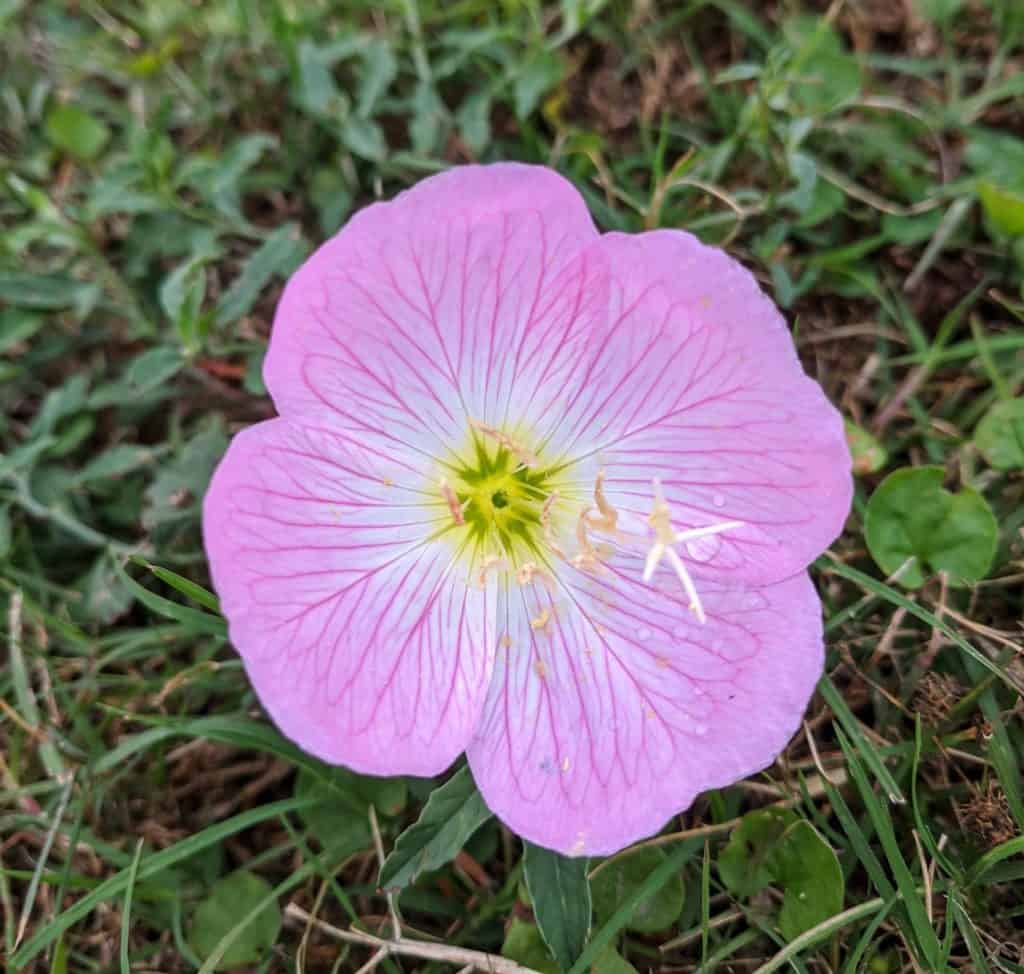What’s not to love about native Texas wildflowers? They reseed easily and are usually drought tolerant. Many species attract butterflies and other pollinators which are good for our gardens.
What’s not to love about native Texas wildflowers? They reseed easily and are usually drought tolerant. Many species attract butterflies and other pollinators which are good for our gardens.
And here in the Lone Star State, we have a wonderful variety that paints fields and roadsides in bright sprays of pink, purple, red, and yellow throughout the spring and summer, thanks in part to Lady Bird Johnson. She encouraged the planting of native species along our highways after she left the White House and returned to Texas.
We’re taking you on a trip through some of our favorite Central Texas wildflower species. This list is definitely not comprehensive. After all, there are over 5,000 species of flowering plants in Texas! But here are some of the blooms that you’ll be likely to see this spring and summer as you explore our beautiful native landscape.
Bluebonnets

The most famous of all Texas wildflowers is actually six different species of Lupinus flower. But they’re all included under the designation of State Flower of Texas.
These bluish-purple flowers bloom briefly from March until mid-April in Central Texas. They were named “bluebonnets” because the petal’s shape resembles the bonnets that pioneer women wore to shade their faces from the hot sun.
If you grew up in Texas, you may have heard that it’s illegal to pick bluebonnets, as they’re the state flower. This actually was true from 1933 to 1973, punishable by a fine of up to $10 — although children were exempt from prosecution. The legislature erased the law in 1973 during a rewrite of the criminal code. But it is still illegal to damage public property, and to pick wildflowers or any other plant life in state parks.
While gathering a bunch of bluebonnets won’t land you in jail, remember that Texas wildflowers are for everyone. So enjoy with your eyes, not with your hands.
Indian Paintbrush

Indian paintbrush is a genus of around 200 different flowers. They come in many colors, but in Texas we mostly see the bright red varieties. It’s also called prairie-fire for the way it makes the grassland look like it’s ablaze.
Interestingly, the brightly colored parts of Indian paintbrush are not its petals, but a modified leaf called a bract. The flashy bracts look like they were dipped in paint, showing green near the stem and then turning to their bright color about halfway down. They protect the inconspicuous petals near the center of the plant.
Indian paintbrush blooms in March through May. The flowers are edible and were eaten by some Native American tribes. But the roots and green parts can be toxic, so we recommend keeping these plants out of the kitchen.
Texas Thistle
This distinctive-looking flower is immensely valuable to Texas bird and insect life. Its vibrant purple needle-like petals bloom in early summer, attracting bumblebees and butterflies to its nectar.
Goldfinches benefit from Texas thistle, too. They eat the seeds, then line their nests with the fluff that the ripened seeds leave behind.
Indian Blanket

Also called firewheel (for obvious reasons), Indian blanket is one of the prettiest wildflowers in the state. The red petals with bright yellow tips bloom through the summer, from April through July.
When a whole field is sewn with Indian blanket, it can look like a brightly woven tapestry. It’s the state flower of Oklahoma, but we won’t hold that against it.
Butterfly Weed

Butterfly weed is a species of milkweed with small red and orange flowers. It attracts monarch butterflies who feed on the nectar and lay their eggs on the leaves. When the pupae hatch, the caterpillars feed on the leaves as their first food source.
Milkweed is actually toxic to most other species, but monarchs have evolved to absorb the plant’s toxin which in turn makes the caterpillars and butterflies toxic to other predators. They bloom from May through September, making them a bright addition to your low-maintenance summer garden.
Prickly Pear Cactus

While we may not often think of a cactus as a wildflower, the prickly pear is a native plant and it produces big yellow, orange, and red blooms…so we think it counts.
As the state plant of Texas, the prickly pear cactus can be found in fields, forests, patios, and backyards. It’s a prolific, integral part of the Texas landscape. The paddles of this cactus are edible and delicious, as is its deep maroon fruit, called a “tuna.” The prickly pear fruit makes a tasty jelly, or an excellent addition to a Texas-sized margarita. Look for these pretty flowers in May and June.
Mexican Hat

These distinctive flowers are named for their drooping red and yellow petals that resemble a broad-brimmed sombrero. They’re also called thimble flowers, for the central disk’s resemblance to a sewing thimble.
These flowers bloom in May through July or later, attracting bees and butterflies. They’re easy to grow, which makes them a great addition to a small wildflower patch at home.
Pink Evening Primrose

These pale pink flowers are named for their distinctive behavior. In the northern parts of Texas, they open at dusk. Each bloom opens only once, and then withers away and is replaced the next day by a new flower. In southern parts of the state, the flowers stay open all day.
Pink evening primrose blooms from April through June, and loves bright sun and dry conditions. They’re also called pink ladies or buttercups.
A word of warning — while these beauties look lovely out in the wild, they can spread very quickly and suffocate your other flowers and plants. So keep these in the fields, and out of your garden.
Enjoying Texas Wildflowers
Wildflower season is coming soon, and there are lots of ways to enjoy it! Visit the Lady Bird Johnson Wildflower Center where you can wander the grounds and see over 900 species of native plants. Or have a picnic at a state park to see the untamed beauty of the natural landscape.
And plan to come by Barton Hill Farms for our Spring Festival! Our acreage on the banks of the Colorado River is home to some lovely native wildflower species! For updates on ticket sales and festival information, make sure to sign up for our email list where you’ll be first to learn about festival dates and early bird ticket sales.
Sign up for our Newsletter
Sources:

